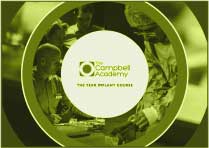
If you've been reading this over the past few days, you'll realise that my time has been focused on education and big questions about education in dentistry.
On Thursday, when Martin and Katalina were visiting from Switzerland, we had several unscheduled, unscripted meetings and conversations with people around the Clinic. There was one with Dominic, as he was working on digital planning at the digital planning station in the lab, and Martin and Katalina were interested in what he was doing. It allowed both Dominic and I to open up a conversation about the difference in how people learn, and particularly how they learn in our world of implant dentistry.
It's 28 years since I placed my first dental implant in Ilkeston in Derbyshire. It was a lower anterior on the right side. I could write the patient's name down here (but I won't). I still have the 35 millimetre photographs!
At that time, dental implants were the wild, wild west; you just shot everyone with an implant gun and hoped that it worked.
That was the accepted process at that stage, and our success rates were extraordinarily high for something that was so fascinatingly new.
The way we learned, though, was to place lots of implants and look and see what happened. Did the patient die? – No. Was the implant in the right place? - Generally no, maybe a bit, yes. Were the outcomes afterwards what we expected? - Generally, we didn't know what to expect. How did we make it better?
There were loose collaborations, and there were some formal collaborations. In 1999, I went to the first of my world symposiums for the ITI in Lucerne, Switzerland (that was early and entrepreneurial).
And so, it began to gather steam among a few practitioners of the United Kingdom, but the truth is, we learned by trial and error, we researched in the marketplace, but didn't realise that's what we were doing.
Of course, now the world is entirely different, particularly in the United Kingdom; there are regulations, peer review, legal structures, and all sorts of things that keep us on a straight track.
There's also the fear of new clinicians of what goes wrong, a massive expansion of defensive dentistry and defensive medical practice that we knew nothing about in the 90s, but the way that the young guys or the new guys learn implant dentistry now is utterly different, and we have spent years developing this now in our own education services.
Digital planning is cool and sexy and interesting (and financially great for the suppliers), but it is the essence of how we learn. We collect information from patients and then we place implants virtually without touching them, understanding the pros and cons, understanding the position, they need to be, understanding the biology, all of this is teachable before the patient is touched and then we control what happens to the patient as much as possible through the guided placement process and then be able to reflect. We can even scan the implant after placement with an iOS scanner and measure exactly what it is in relation to our planning.
If we photograph (or, better yet, video) the case, the amount of reflection and learning through a single implant case is exponentially greater than it ever was.
This is how to learn to place dental implants; in fact, it's the only way to learn to place dental implants.
While we obviously must know how to fly the plane without autopilot, technical advances in the planning of implant dentistry are the only way we will ever teach people to do it, moving forward.
Blog Post Number - 4230





Leave a comment